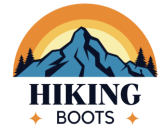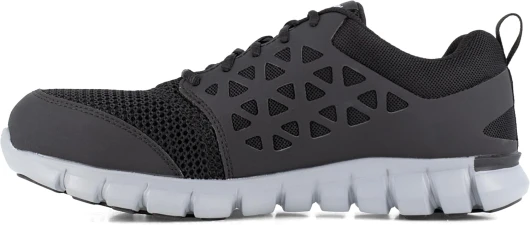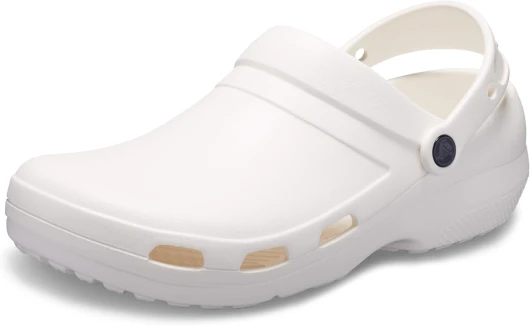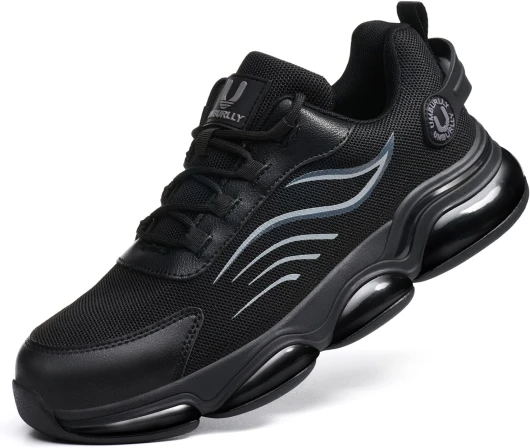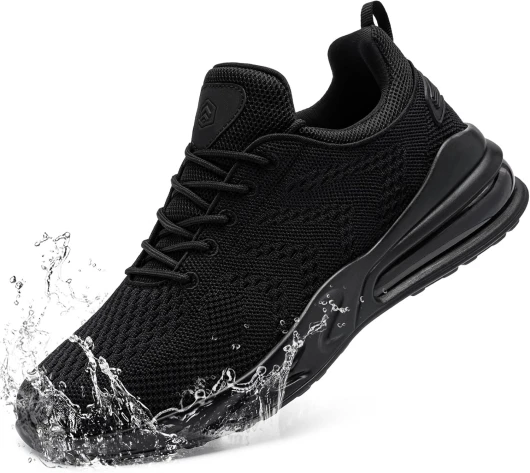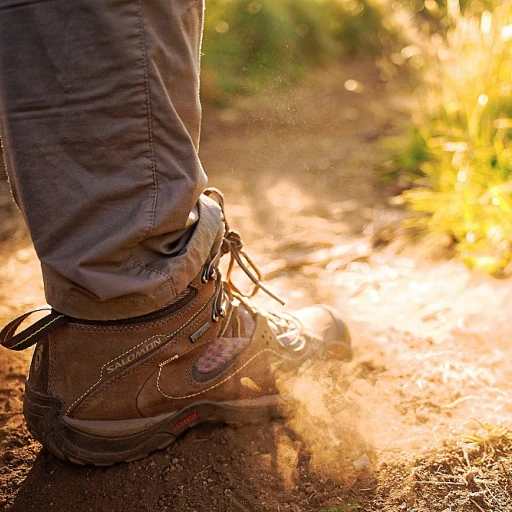
Understanding the Need for Breathability in Hiking Boots
The Importance of Airflow for Your Feet
When engaging in outdoor activities, from casual hikes to rigorous mountain climbing, the significance of breathability in your footwear cannot be overstated. Maintaining a comfortable temperature for your feet isn't just a matter of convenience—it's crucial for preventing discomfort and possible injury. Breathable work shoes and hiking boots allow for increased airflow, preventing the accumulation of moisture that can lead to blistering or fungal infections.
The benefits of proper airflow are not limited to comfort. Breathable materials also help manage the internal environment of hiking boots, making them not only more comfortable but also enhancing the overall longevity of the boot itself. Materials that promote breathability, like mesh and advanced synthetics, ensure your feet can "breathe," reducing the risk of overheating.
Quality hiking boots, often equipped with steel toe or composite toe features, provide protection against harsh outdoor elements while maintaining a lightweight and breathable design. This ensures both safety and ultimate comfort, ideal for the seasoned hiker or outdoor worker. For those looking to explore different options, our detailed post on the versatility of muck ankle boots delves into other breathable choices.
Materials That Enhance Breathability
Breathable Materials: A Game Changer for Comfort
When it comes to hiking boots, the importance of breathability cannot be overstated. Outdoor enthusiasts understand that staying comfortable during long treks predominantly depends on how their feet manage heat and moisture. This is where the choice of materials becomes crucial.
Innovative materials such as mesh and Gore-Tex liners play a pivotal role in enhancing breathability. These fabrics allow for efficient airflow and moisture-wicking, preventing feet from overheating and reducing the risk of blisters. This is especially beneficial for those wearing moc toe boots, a popular versatile choice among hikers.
Additionally, incorporating features such as steel or composite toe caps can add protective elements while still maintaining breathability. While some may worry that reinforced toe caps might compromise comfort, modern technology ensures that they still allow adequate air circulation.
- Mesh Liners: Lightweight and breathable, often found in modern hiking boots.
- Gore-Tex: Known for its waterproof yet breathable capabilities, keeping feet dry from both rain and sweat.
- Composite Toe: Offers protection without the weight of steel, maintaining comfort and ventilation.
- Waterproof Steel Toe: Perfect for environments where both protection and moisture management are critical, ensuring feet stay dry and secure.
Comparing Breathable Work Shoes and Hiking Boots
Key Differences Between Work Shoes and Hiking Boots
When it comes to tackling rugged outdoor trails or navigating a challenging work environment, the choice between breathable work shoes and hiking boots is crucial. Although both types of footwear prioritize comfort and safety, they are designed with distinct purposes in mind. For one, work shoes often come with features tailored for demanding environments such as factories or construction sites. These shoes typically include safety components like steel toe caps, puncture resistant soles, and electrical hazard protection. These elements are paramount for maintaining foot safety in environments where heavy objects can fall or sharp debris can pose a risk. In comparison, hiking boots emphasize navigating through nature's topographical challenges. Breathability proves vital here to ensure long-lasting comfort. These boots usually feature waterproof materials that also allow moisture to escape, maintaining dry feet while trekking through mud and rain. As mentioned in the discussion about the need for breathability, these characteristics help prevent blisters and discomfort on lengthy hikes. Additionally, both categories place a high emphasis on slip resistant soles to provide traction on varied terrains. However, the design goals diverge; while work shoes might focus on durable soles for oil or grease-covered surfaces, hiking boots target various landscapes like rocky or muddy paths. Price also plays a significant role in differentiating these options. While work boots and shoes often lean towards a higher sale price due to their specialized materials and protective features, trekking enthusiasts may find regular price deals on hiking boots that suit their needs, considering factors like arch support and composite toe alternatives for weight reduction. For those considering breathable options outside the context of work and hiking, look into the best hiking sandals for kids. Understanding these nuances facilitates making an informed decision, ensuring comfortable and safe feet, no matter where the journey leads.Challenges Faced by Outdoor Enthusiasts
Outdoor Challenges That Demand Specialized Footwear
Navigating outdoor terrains presents unique challenges, particularly for enthusiasts who often find themselves trekking through diverse environments. When faced with these conditions, the footwear you choose becomes crucial not just for comfort but also for safety and performance. Hiking trails aren't always predictable; they can be rocky, wet, or covered in debris. These elements require boots that are slip resistant to prevent accidents on slippery surfaces. For outdoor enthusiasts, wet environments mean the need for waterproof or water-resistant boots that keep their feet dry, ensuring comfort and reducing the risk of blisters and other foot problems. Furthermore, a wet-toe work environment may demand specific features in your work shoes to combat these challenges effectively. Safety is another concern. The possibility of stepping on sharp objects emphasizes the importance of puncture resistant soles and durable toe caps, like steel or composite toes, for added protection. These features are vital to guard against the risk of injury and enhance the lifespan of the footwear, ultimately leading to better value for the price regular footwear demands. Moreover, you'll want to consider the support your shoes provide. Walking on uneven terrain requires excellent arch support to prevent foot fatigue and protect against long-term injuries. While some enthusiasts opt for regular slip-on boots for convenience, ensuring they offer safety toe protection, either composite or steel, and slip resistant qualities is key for ensuring safety in unpredictable outdoor settings. Ultimately, the challenges faced by outdoor lovers dictate a careful selection of work boots and hiking footwear. Balancing comfort, safety, and durability is essential to overcome the hurdles of nature while enjoying the adventure it offers.Innovations in Hiking Boot Technology
Advancements Transforming the Hiking Experience
Recent innovations in hiking boot technology have greatly transformed the performance and comfort of hiking footwear. As outdoor enthusiasts demand more from their gear, manufacturers are responding with advanced designs, materials, and features that redefine what hikers can expect when they step into a pair of hiking boots. One of the most significant advancements in recent years is the integration of breathable yet waterproof materials, allowing hikers to maintain dry and comfortable feet in various weather conditions. These materials are engineered to expel moisture from within while preventing ingress of water from the exterior, offering the wearer both comfort and protection. This advancement translates well into work boots as well, where waterproof steel and composite boots offer both slip resistance and breathability. The incorporation of safety features is another vital area of advancement. Many boots now come with steel or composite toe caps, ideal for both safety toe work boots and hiking boots. These toe caps provide essential protection against potential impacts, enhancing safety without compromising on breathability or comfort. Enhancements in sole technology have also been a game changer. Puncture resistant and slip resistant soles improve traction and protection, particularly on rough terrain. These advancements ensure that hikers have the necessary support and grip, even in slippery conditions. For those concerns about pricing, sales on these technologically advanced boots have become more common, making them accessible to a broader range of enthusiasts. When considering sale price versus regular price, investing in boots that offer superior comfort and protection, like waterproof work boots with strong arch support, is often a wise decision. From waterproof work shoes to work boots designed for electrical hazard safety, each improvement makes the hiking experience safer and more enjoyable. Whether you’re looking for men’s shoes that are breathable, comfortable, and durable, or a pair that can withstand the demands of outdoor work, recent technological advances ensure there is a boot to fit every need.Tips for Choosing the Right Hiking Boots
Choosing the Perfect Fit
Selecting the right hiking boots can make a world of difference in your outdoor experience. Consider these factors to ensure you make the best choice for your needs:
- Comfort and Fit: It's crucial to choose boots that provide a comfortable fit. Look for options with ample arch support, a good grip, and a snug heel to prevent slipping and blisters.
- Breathability: As discussed earlier, breathable materials are key. Opt for boots made from materials that allow moisture to escape, keeping your feet dry and comfortable.
- Safety Features: If you're considering hiking in rugged terrains, prioritize boots with safety features like steel or composite toe caps, waterproof steel construction, and puncture resistant soles. These features provide added protection against potential hazards.
- Durability: Outdoor activities demand durable footwear. Look for boots with reinforced toes, slip resistant soles, and waterproof capabilities to withstand the elements.
- Price and Value: While the regular price of high-quality boots might seem steep, investing in durable, comfortable options can save you money in the long run. Keep an eye out for sales and discounts to score high-end work boots at a sale price.
- Special Features: Consider any specific needs, like electrical hazard protection or resistance against slips and punctures, which are critical for work boots in certain environments.
Consider these factors carefully, and you'll find a pair of hiking boots that will serve you well, whether you're tackling mountain trails or navigating your daily commute with ease.
